Cracked area of Larrea
If the wealth of the lands of Euskal Herria is due to a wide and varied environment, one of the best exponents would be Larra.
This karst land (geological formation) has an enormous life in its interior, and can be the most important region of our country considering its extension and conservation.
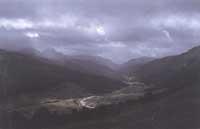
The topography or the shape of the land, has a chaotic and fascinating aspect in this small plot without hardly scratching, and without much imagination we can appreciate the hardness and charm of the landscapes of 5,000 years ago.
The broken appearance of Larrako's esplanade confers it on karst terrain. Despite the dangers that can be seen in these highlands, we must first exalt the beauty of these mountains to learn to balance their greatness and importance.
It is mandatory to mention the peculiarities and adaptations of karst lands for their particular game in Larra. And first of all, it must be mentioned that the stone is shaped like dry clay, which is a cracked earth and full of holes. The waste water has no drainage and is directed directly to the subsoil. These karst lands, being permeable, we will not find permanent rivers in them and only they will disperse on the ground after large falls.
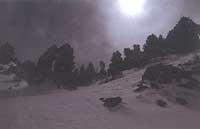
Despite the geological formation on which the limestone is based, the black pines that take place in this area are not to be ruled out. It is the largest karst land in Europe covered in black pine. The black pine cultivated here can be more than 350 years old, being evident the maturity of this type. In the Cebollera mountain range, for example (Soria and La Rioja), we find black pines of about 600 years. The cutting age comes late, when they are cast between 120 and 150 years and is done very carefully. This unique tree is able to live in bare stone, becoming a primary plant. These pines are very strong and remain firm in the rays, winds and storms. If we go to Larrara, the surviving picture of these pines is unique.
The territory they occupy is wide, being Eskilzarra, Los, the triangle of Budogia more or less limited.
Under these skies, pines and limestones open endless underground caves that offer speleologists who carry the light on their heads unique cavities.
The region of Larrea is one of the most important regions in the world, due to the simas and simas in it. Geologically, therefore, it is a very interesting territory and certainly interesting for geologists.
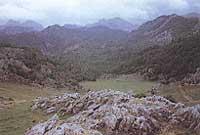
This wild land has not been affected by humans, at least in a notorious way. Although trees occasionally came out, they did not reach the highest places in Larrea due to the difficulties they encountered.
Rumors of storms are constant in some reservoirs and snow invests for a long year. Rainfall per square meter is higher than 2,000 mm per square meter throughout the region, although it can reach 3,000 mm in the higher regions. If to these fallen precipitations in the form of snow or rain we unite the distance, the height and the broken relief, we will easily understand how Larrea has preserved its ancient aspect.
Being the black pine the most characteristic type of tree, others are born in it, giving the vegetation a great variety. The beech and a fir-tree will create a payment. This pay joins the black pine in an extensive region, with the limit of the triangle Eskilzarra-Zanpori-Lapazarra. Practically we will not find beech trees without fir trees or pine trees and the pine forests only find them in the eastern highlands without mixing them with other trees.
The Larrea forest is the highest region of the western Pyrenees. It is also very special from a climate point of view. It includes the climatic particularities of the Mediterranean and Cantabrian slopes.
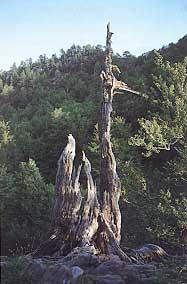
All these characteristics make the present fauna very rich. In fact, being animals of the Mediterranean side and of the Cantabrian side, we find a series of curious plants, forming suitable and unique microclimates.
There are types in the world of plants with the scientific word “endemic” (isolated plants or animals or associated with a very particular ecosystem). Within animals there are also some that can be considered endemic. This is the case of the white lizard (Lagopus mutus), the wild (Tetrao urogallus) and the bear (Ursus arapices).
As we know from the footprints of the caves and writings, the bear lived in all the places of Euskal Herria, but as always, as human influence increased, the bear began to move away until this eastern territory became the last refuge.
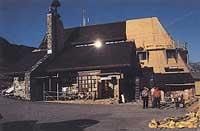
The tendency to walk at night and hide makes it very difficult to know how many there are exactly. In 1950 it was thought that there were 70, but in 1986 there were only 20 heads. Today, seven years later, it is estimated that there will be ten bears throughout the Pyrenees. However, the traces of a couple have been discovered in Larrea.
In recent years the bear has been hit hard. This current, which in previous years has pretended to resemble natural tourism and ecologism, has led us to open new roads, quiet areas and campsites until these last hideouts of bears. People do not respect these last settlements and discourage them anywhere. Since the bear is a very cautious and especially painstaking animal, the louder screams or noises can be frightened by going to a region miles away.
The future of bears is really black. Against hunters, baserritarras, poisons, etc., current bears have enough work to survive.
But continuing with the fauna, there are many other animals that can appear in a well balanced ecosystem. Mammals include deer (Cervus elaphus), roe deer (Capreolus capreolus), wild cat (Felix silvestris), sarrio (Rupicabra rupicabra) and wild boar (Sus scrofa).
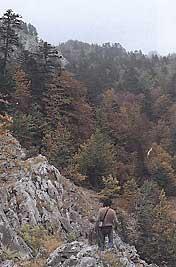
Among the birds, apart from the Tetrao urogallus and the White Lizard (Lagopus nivalis), we will find other species of interest such as the Romero Falcon (Pernis apivorus), the Red Hawk (Falco tinnunculus) and the Black Eagle (Aguila chruysaëtos). To demonstrate his greatness we can see the bearded vulture.
Those that inhabit the trunks are the green beak (Picus viridis), the black beak (Dryocopus martius) and the hepatic beak (Dendrocopos leucotos).
Among the mammals, an animal that lived long ago has reexploded the earth. The musar (marmota marmota) has grown thanks to repopulations made in the French state.
Fortunately, all of Larra was converted into a reserve with a “comprehensive reserve” in its center. Although the protection in the integral reserve is total, in the nature reserve you can control some type of animal.
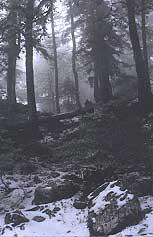
But the ecological protection of this territory has not been possible thanks to an idea, and if it has preserved its ancient splendor it has been due to lack of exploitation and remoteness; for example, because it was very difficult to carry wood.
These ideas of support are the fashion and needs of a few years ago, and an example of what did not exist between us is the Belagoa-Antxomarro road, built 15 years ago. This road, in addition to deteriorating its landscape and causing the demolition of the bridges, left the places of residence of the bear cut by the center.
We would also have to go to the refuge of Belagona to realize that from there there there are no obstacles to access to Larrea. Although in theory shelters are almost perfect, in them there is usually no. Although the natural reserves, especially the integral one, were conceived to be visited by a certain number of people, today anyone can access. So things and with Leitzaran's politics nearby, today we can see how never before was it possible that the thirst for money and absurdity could be the last breath of the Basque narturgunes.
Buletina
Bidali zure helbide elektronikoa eta jaso asteroko buletina zure sarrera-ontzian











